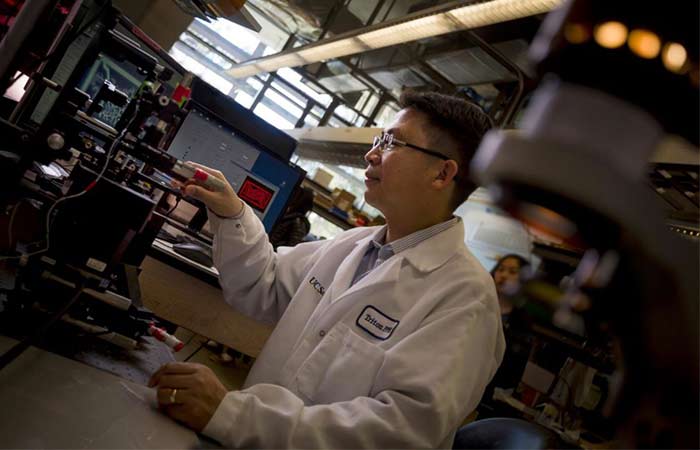Organ manufacturing is undoubtedly the most significant research in 3D sector, continues with various projects from all around the world. Could it be now possible to manufacture fully functioning organs with this technology? A research made in University of California San Diego gives hope for us all.
The research team was led by Dr. Shaochen Chen, head of the Nanobiomaterials, Bioprinting, and Tissue Engineering Lab at UC San Diego. Dr. Shaochen Chen and his lab have been responsible for several tissue engineering and 3D printing breakthroughs, including the development of advanced bioprinted liver tissue and nanoscale 3D printed robotic fish designed to remove toxins in the body.
Researchers first create a 3D model of the biological structure on a computer. The computer then transfers 2D snapshots of the model to millions of microscopic-sized mirrors, which are each digitally controlled to project patterns of UV light in the form of these snapshots. The UV patterns are shined onto a solution containing live cells and light-sensitive polymers that solidify upon exposure to UV light. The structure is rapidly printed one layer at a time, in a continuous fashion, creating a 3D solid polymer scaffold encapsulating live cells that will grow and become biological tissue.
“Almost all tissues and organs need blood vessels to survive and work properly. This is a big bottleneck in making organ transplants, which are in high demand but in short supply,” said Chen, who leads the Nanobiomaterials, Bioprinting, and Tissue Engineering Lab at UC San Diego. “3D bioprinting organs can help bridge this gap, and our lab has taken a big step toward that goal.”

Dr. Chen and his lab plan to pursue additional research into the creation of patient-specific tissues from human induced pluripotent stem cells taken from the skin of the patient, preventing the risk of rejection. Eventually, they want to take their research into clinical trials, although Dr. Chen notes that it will be several years before they get to that point.